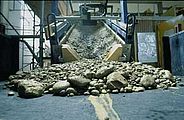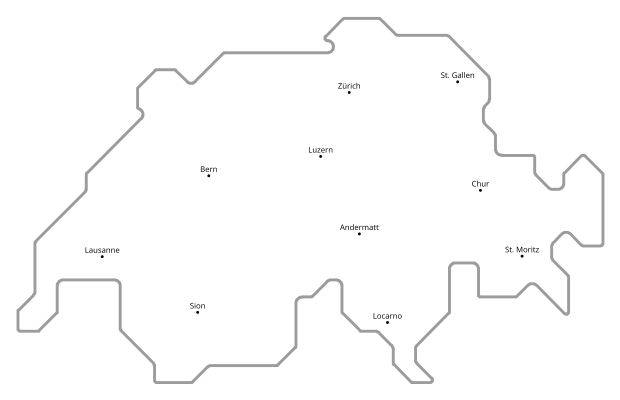The debris flow laboratory at the WSL offers the possibility to investigate debris flows at a small scale. This allows scientists to study, for example, flow behavior for various natural materials, investigate debris flow impact, explore the erosion process, and test instruments before deployment in the field. The channel is also used to illustrate the debris flow process for visitors.

Debris flows are mass movements with a flow behavior resembling both landslides and floods. They often occur following intense rainstorms or lake or dam failure, and typically move rapidly down a valley as a series of waves or surges. Some debris flows appear to have a dry boulder-rich front and move quickly down a channel, destroying everything in their immediate path, other debris flows move more slowly and flow around small objects in the flow path; sometimes evidence of both types is found following a debris flow in the field. In any case, debris flows may cause significant damage and even loss of life.
To improve protection measures it is necessary to know the exact processes within a debris flow. This is why we investigate mud flows both in experimented field sites as well as in smaller-scale laboratory experiments.
Five-meter channel
For the latter, we are using the laboratory channel which fits neatly into our large-scale laboratory at the WSL, well equipped with small-scale instrumentation such as laser and pore water pressure probes as well as large-scale infrastructure such as an overhead crane and large pumps.
Such channels generally consist of a start box and a short acceleration section where the debris flow wave develops. This connects to a several meter long measurement section that is either straight or curved (depending on the experiment), finally ending either on a laterally-unconfined sloping surface or in a collection box. The channel width can be varied from more than a meter wide to narrower, depending on the experimental design, and it is also possible to use install 3D channel-bed geometries.
The laterally unconfined tilted plane is artificially roughened to allow the flows to develop correctly. The curved channel consists of curves with different radii and is also artificially roughened. All segments can be independently tilted. Measurement equipment such as laser stage sensors and high-frame-rate cameras allow detailed observations of the flow and depositional properties.
Project "Debris Flow" as an example of the use of the channel
As part of a research project financed by the ETH Board, WSL scientists examined the erosive behavior of debris flows in the laboratory channel. The focus was on the common boulder-rich variety, and natural sediments from recent debris flows were used in the experiments. Erosion of the channel bed was also investigated by placing debris flow material in the channel bed under conditions similar to what would be expected in the field. About 170 experiments were performed and the processes were investigated by systematically varying the properties of the sediment mixture, such as the water content. Before and after each experiment, the topography of the channel was measured to assess erosion.
